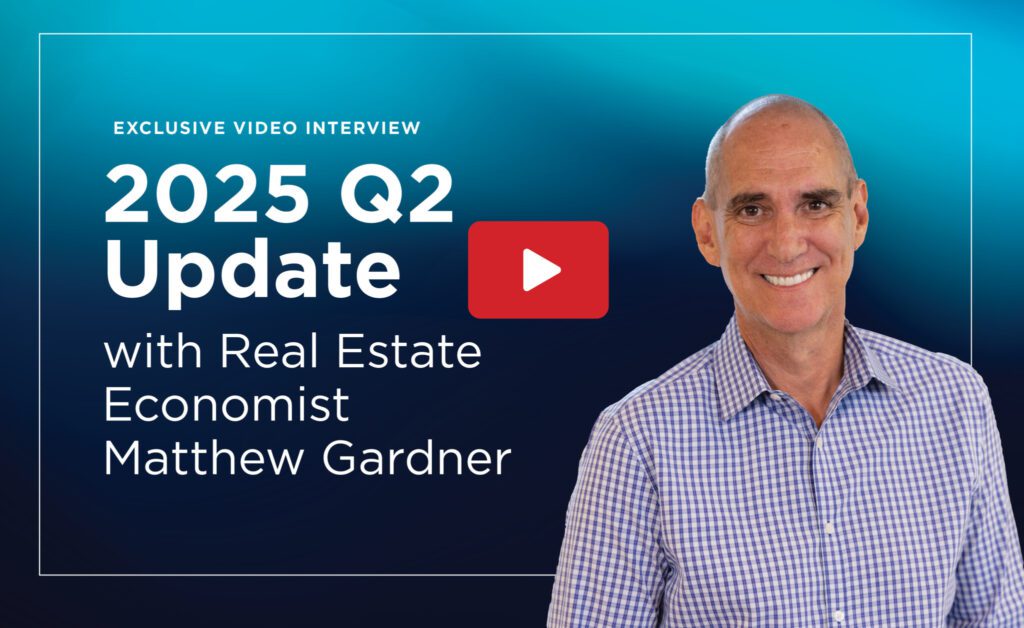Real Estate Update: Key Insights for Q2 2025
As we move deeper into 2025, real estate trends and economic indicators play a crucial role in shaping the housing market landscape. In a recent discussion with renowned economist Matthew Gardner of Gardner Economics, several vital topics regarding interest rates, housing finance, and urban market dynamics were highlighted.
Potential Shift in Federal Reserve Policy
Former President Trump’s intention to appoint a new Federal Reserve chair aligned with his economic views raises concerns about future interest rates and Fed policy. Gardner emphasized that while current Chair Jerome Powell has around ten months remaining in his term, the expectation for a new nomination could alter the Fed’s independence:
- Current Economic Environment: The president is likely to choose someone who mirrors his political and economic ideologies, which could push for lower interest rates.
- Historical Context: Gardner referenced Arthur Burns, a past Fed chair who faced pressure to reduce rates, contributing to long-term inflation issues.
The consensus suggests Powell will likely complete his term, with a potential interest rate reduction forecasted for September 2025, amid uncertainties surrounding tariffs and global economic stability.
The Privatization of Fannie Mae and Freddie Mac
The longstanding conversation around the privatization of Fannie Mae and Freddie Mac continues, with Gardner outlining significant challenges:
- Conservatorship Complications: Both entities remain in conservatorship, with no clear plan to exit this state.
- Capital Requirements: There’s an urgent need for Fannie Mae and Freddie Mac to bolster their capital reserves to attract private investors.
Obstacles to Privatization
- Political Bipartisanship: A lack of unity in government could deter potential investors from committing large sums to a privatized model.
- Profitability Concerns: The viability of a privatized Fannie Mae and Freddie Mac hinges on their ability to offer attractive returns, which could be complicated should they lose government backing.
In conclusion, while there is a plausible future for privatization, substantial barriers currently exist.
Urban Condo Market Dynamics
Urban high-rise condos are experiencing price pressures, raising questions about an impending market correction. Gardner discussed factors influencing this trend:
- Post-COVID Migration: The shift to remote work led many to leave urban areas, impacting demand.
- Insurance Costs and Assessments: Rising insurance rates and underfunded HOA fees have made ownership less attractive.
Observations on Specific Markets
- Florida: Cities like Naples and Orlando are witnessing significant price reductions.
- California: Markets such as Palm Desert and San Jose are also grappling with challenges.
- Washington, D.C.: Layoffs in government sectors have negatively impacted the D.C. housing market.
Despite these struggles, Gardner noted signs of recovery in cities like Miami and Tampa, where demand is beginning to rebound.
New Construction vs. Resale Market
Traditionally, new constructions commanded a premium over resale houses. However, recent shifts are changing this narrative:
- Rising Inventory Levels: A 20% year-on-year rise in resale inventory has placed pressure on new builders.
- Market Variability: In regions like the Northeast and parts of the Midwest, new constructions still maintain a premium, while in the Sunbelt, builders are facing increased competition.
Strategies Employed by Builders
- Price Reductions and Concessions: Recognizing the need to sell, many builders are offering rebates on mortgage rates and other concessions.
- Innovative Rate Programs: Builders have started initiatives like the 3-to-1 rate buy-down, extending these offers throughout the mortgage duration to reduce costs for buyers.
Key Metrics to Watch: Second Half of 2025
As we look toward the latter half of 2025, Gardner identifies critical trends to monitor:
- List Prices vs. Sale Prices: Observing whether asking prices are rising or falling can signal shifts in the market.
- New Inventory Levels: Tracking the introduction of new homes will provide insight into future pricing stability.
Conclusion
The real estate landscape is poised for ongoing evolution. Understanding the interplay between economic policy, financing structures, and market dynamics will be vital for stakeholders looking to navigate the complexities of the housing market.
For more insights on housing trends and related economic topics, you can explore Gardner Economics or visit National Association of Realtors for the latest updates.


